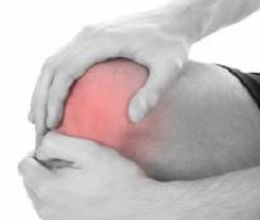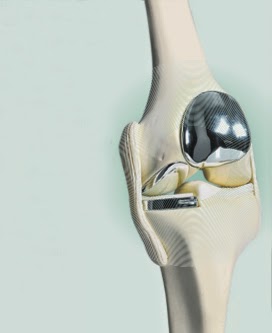Latest Technology In Orthopaedics
 When our joints become injured or diseased, the pain and swelling can limit our mobility. We have pain during work, exercise and sports. Although the causes are diverse, one of the most common causes is osteoarthritis.
When our joints become injured or diseased, the pain and swelling can limit our mobility. We have pain during work, exercise and sports. Although the causes are diverse, one of the most common causes is osteoarthritis.
Within the joint, the ends of the bones are covered with cartilage. This cartilage provides a smooth covering for movement. Thinning or damage to the cartilage causes friction. The friction leads to pain and swelling of the joint. This is termed osteoarthritis.
Medications such as painkillers or glucosamine can help ease joint pain but they do not treat the cause and may lead to stomach bleeding or kidney damage.
Stem Cell Therapy
A new potential form of treatment for early cartilage damage in the knees is stem cell therapy. If detected early and if the patient is below 50 years of age, stem cell therapy can be a recommended option as an attempt to regenerate the cartilage.
For this treatment, knee arthroscopy (keyhole surgery) is performed first to assess the damage. Then the patient’s cells are extracted using a needle from the pelvic bone. During the next 3 weeks the cells are cleaned, separated and multiplied. At 3 weeks, the stem cells can be injected into the damaged knee.
The use of stem cells in medicine is limited and I am one of the few doctors internationally who is accredited by the Singapore Ministry of Health to perform this treatment within a regulated clinical trial.
Unfortunately a lot of places around the world make claims that they work with stem cells but they only have credibility if they have published research on stem cell treatment in international research journals.
Arthroscopy/ Keyhole Surgery
This is surgery performed through two small 0.5cm incisions at the front of the knee. Small telescopes are used to see and treat injuries within the knee. Although this technique of surgery has been available for some time, the equipment used during the surgery has advanced dramatically.
The meniscus is a small cartilage in the knee that acts like a shock absorber or cushion. Tears in the meniscus are often treated by partial removal of the meniscus but this lead to arthritis after many years. Tears of the meniscus can now be treated with suture repair. Meniscus repair preserves the normal knee anatomy and prevents the development of osteoarthritis.
The cartilage is the smooth covering of the bones. Small defects in the cartilage can now be arthroscopically repaired and covered with collagen matrix patches.
Recent studies have shown good cartilage healing with this technique.
Partial Knee Replacement
 Knee replacement surgery consists with replacing the damaged cartilage of the knee. Using the analogy of a tooth cavity that causes pain, the dentist may cap the tooth with a metal filling. This is the same procedure that is done for knee replacements whereby the ends of the bones are capped with titanium and plastic. There is no more friction between the bones and this stops the pain and improves the bending of the knee.
Knee replacement surgery consists with replacing the damaged cartilage of the knee. Using the analogy of a tooth cavity that causes pain, the dentist may cap the tooth with a metal filling. This is the same procedure that is done for knee replacements whereby the ends of the bones are capped with titanium and plastic. There is no more friction between the bones and this stops the pain and improves the bending of the knee.
If the osteoarthritis is limited to a certain area, then the patient may only require a partial knee replacement. This is a smaller surgery with less pain and a faster
recovery.
Computer Guided and Minimally Invasive Knee Replacement
If done properly by an experienced surgeon using the best implants, joint replacement surgeries can be 95% successful even after 15 years.
For the best long-term result, a computer is used during the surgery that guides the surgeon in real time to ensure that the knee implant is placed in a neutral alignment.
This process means that the surgery is personalized for each patient to make the leg straight. Poorly implanted knee prostheses have shown to fail early.
Minimally invasive knee surgery means that the cut for the surgery is almost half the size to those using older methods. Additionally, the muscles a split during surgery rather than cut and this leads to less injury. The result in using minimally invasive surgery techniques means that the scar is smaller, the pain is less after surgery and the recovery is faster.
Expert Author:
Dr Andrew Quoc Dutton
Medical Director & Orthopaedic Surgeon, SMG Orthopaedic Group, a Singapore Medical Group (SMG) Clinic.
Further Reading
The article above is meant to provide general information and does not replace a doctor's consultation.
Please see your doctor for professional advice.
